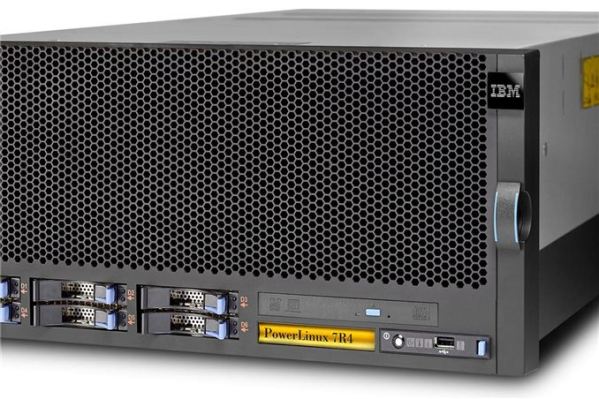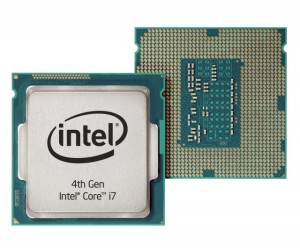“On August 6, Google, IBM, Mellanox, NVIDIA and Tyan today announced plans to form the OpenPOWER Consortium – an open development alliance based on IBM’s POWER microprocessor architecture. The Consortium intends to build advanced server, networking, storage and GPU-acceleration technology aimed at delivering more choice, control and flexibility to developers of next-generation, hyperscale and cloud data centers.”
IBM Hardware Is Not Carrying Its Weight
As the last computer manufacturer with its own silicon fab, IBM has a financial dilemma. The cost of silicon fab investments is increasing. Hardware revenues are declining. There are fewer new Z-series mainframes and POWER-based midrange computers on which to allocate hardware R&D, product development, fab capex, and other amortized costs. POWER revenues were down 25% in the latest quarter. Bloomberg reports furloughs of the hardware staff this month in an effort to cut costs.
The cloud-based future data center is full of Intel Xeon-based servers as practiced by Google, Amazon, Facebook et al. But margins on Intel-architecture servers — IBM’s instantiation is the X Series — are eroding. Widely believed rumors earlier this year had IBM selling off its X Series business to Lenovo, like IBM spun off its PC business in 2005.
Clearly, the IBM hardware business is the subject of much ongoing discussion in Armonk, NY.
The OpenPOWER Consortium is a Strategic Mistake
Our view view is that IBM has made a strategic mistake with this announcement by admitting proprietary defeat and opening POWER up to an open-source consortium. The signal IBM is sending is that it is no longer totally committed to the long-term future of its mainframe and POWER hardware. The sensitive ears of IBM’s global data center customers will pick this message up and, over time, accelerate plans to migrate off of IBM hardware and software.
Proprietary hardware and software business success depends a great deal on customer trust — more than is commonly assumed. Customers want a long term future planning horizon in order to continue investing in IBM, which is not the lowest-cost solution. When trust is broken, a hardware business can crash precipitously. One such example is Prime Computer, a 1980s Massachusetts darling that was acquired, dropped plans for future processors, and watched its installed base decline at a fifty-percent per annum rate. On the other hand, H-P keeps Digital Equipment and Tandem applications going to this day.
By throwing doubt on its future hardware business horizon, IBM risks its entire business model. Yes, that is a far-fetched statement but worth considering: the IBM services and software business is built around supporting, first and foremost, IBM hardware. Lose proprietary hardware customers, and services and high-margin software business will decline.
So, we think IBM is risking a lot by stirring up its customer base in return for a few million dollars in POWER consortium licensing revenue.
What About Google?
To see how this deal could turn even worse for IBM, let’s look at the motives of the headline consortium member, Google.
First, IBM just gave Google the “Amdahl coffee mug”. In the mainframe hay days of the 1970s, it was a common sales tactic for Amdahl, a mainframe clone company in fierce competition with IBM, to leave a coffee mug for the CIO. Properly placed on a desk, it sent the message to the IBM sales team to drop prices because there was competition for the order. A POWER mug — backed by open POWER servers — will send a pricing signal to Intel, which sells thousands of Xeon chips directly to Google. That action won’t budge the needle much today.
POWER servers are most likely to appear in Open Compute form, as blades in an open-hardware rack-tray. These are the cost-reduced server architectures we see sucking the margin out of the entire server industry. Gas on the fire of that trend.
And we don’t see Google needing to build its own Tier-3 backend database servers, a common role for POWER servers. However, Google customizing POWER chips with nVidia GPU technology for some distant product is believable. For example, we’re puzzling how Google will reduce the $85,000 technology cost of its driverless automobile to mass-market cost levels, and the consortium could become part of that solution.
Open POWER Software Too?
IBM is emphatically not throwing POWER operating system (i.e., AIX Unix and OS/400) and systems software into the open consortium. That would give away the IBM family jewels. So, the open-source hardware folks will quickly turn to the Linux on POWER OS’s. Given a choice, the buyers will turn to open-source — that is, free or lower cost — versions of IBM software equivalents for system software. We see little software-revenue upside to IBM’s POWER consortium move. Nor services either.
Fortunately, IBM did not suggest that POWER licensing would extend to the fast-growing mobile world of tablets and smartphones because that would be a bridge way too far. IBM may staunch some of the embedded POWER chip business lost to ARM’s customers and Intel in recent years through customizations by licensing designs ala ARM Holdings.
Thoughts and Observations
In conclusion, we see nothing good happening to IBM’s bottom line as a result of the OpenPOWER Consortium announcement. And if it wasn’t about the bottom line, why risk long-term customer trust in IBM’s long-term hardware platform commitments? The revenue from POWER licensing will not come close to compensating for the weakness that IBM displays with this consortium strategy.
I ask this without drama or bombast: can we now see the dim horizon where IBM is no longer a major player in the computer hardware business? That’s a huge question which until now has never been asked nor needed to be asked. Moreover, no IBM hardware products would mean no IBM fab is needed.
The real implications are about IBM’s declining semiconductor business. POWER (including embedded POWER) is a volume product for IBM Microelectronics, along with current-generation video game chips. The video game business dries up by year end as Sony and Microsoft introduce the next generation consoles, sans IBM content. POWER licensing through the OpenPOWER Consortium might generate some fab business for the East Fishkill, NY IBM fab, but that business could also go to Global Foundries (GloFo) or Taiwan Semi (TMSC). Where’s the chip volume going to come from?
IBM will not be able to keep profitably investing in cutting-edge semiconductor fabs if it does not have the fab volume needed to amortize costs. Simple economics of scale. But note that IBM fab technology has been of enormous help to GloFo and TSMC in getting to recent semiconductor technology nodes. Absent IBM’s help, this progress would be delayed.
Any move by IBM to cut expenses by slowing fab technology investments will have a cascading negative impact on global merchant semiconductor fab innovation, hurting, for example, the ARM chip ecosystem. Is the canary still singing in the IBM semiconductor fab?
Your comments and feedback are invited.
Follow @PeterSKastner on Twitter





